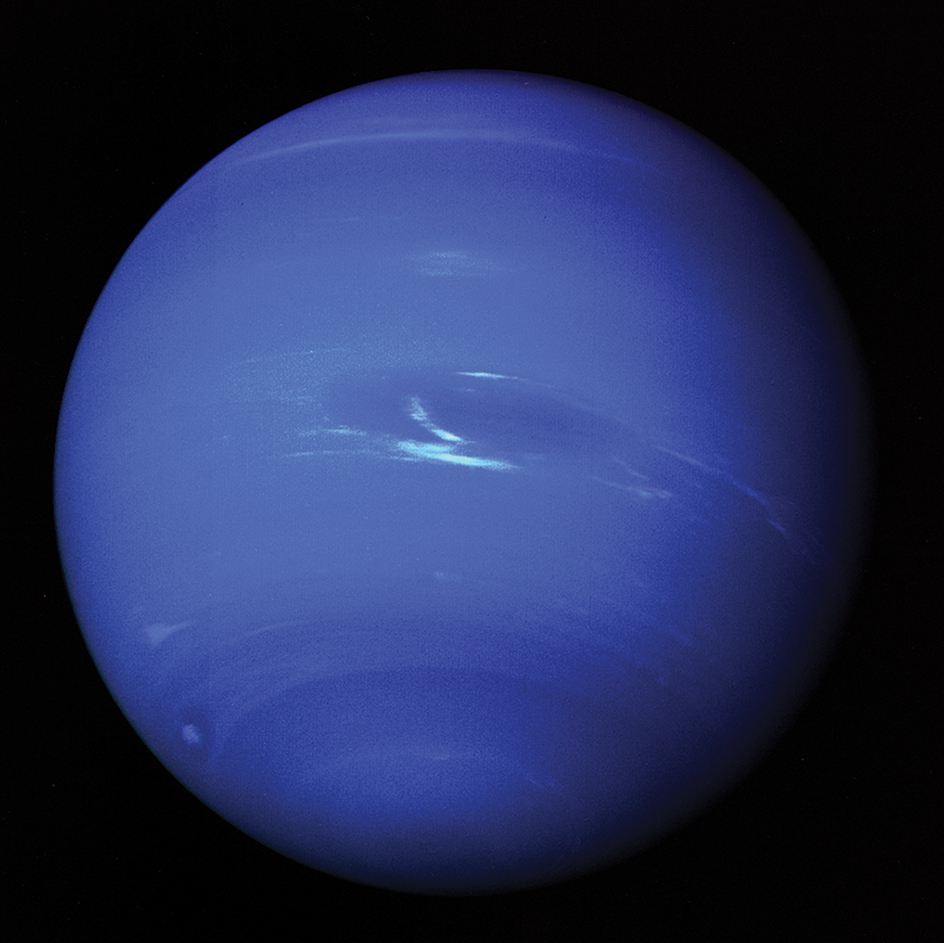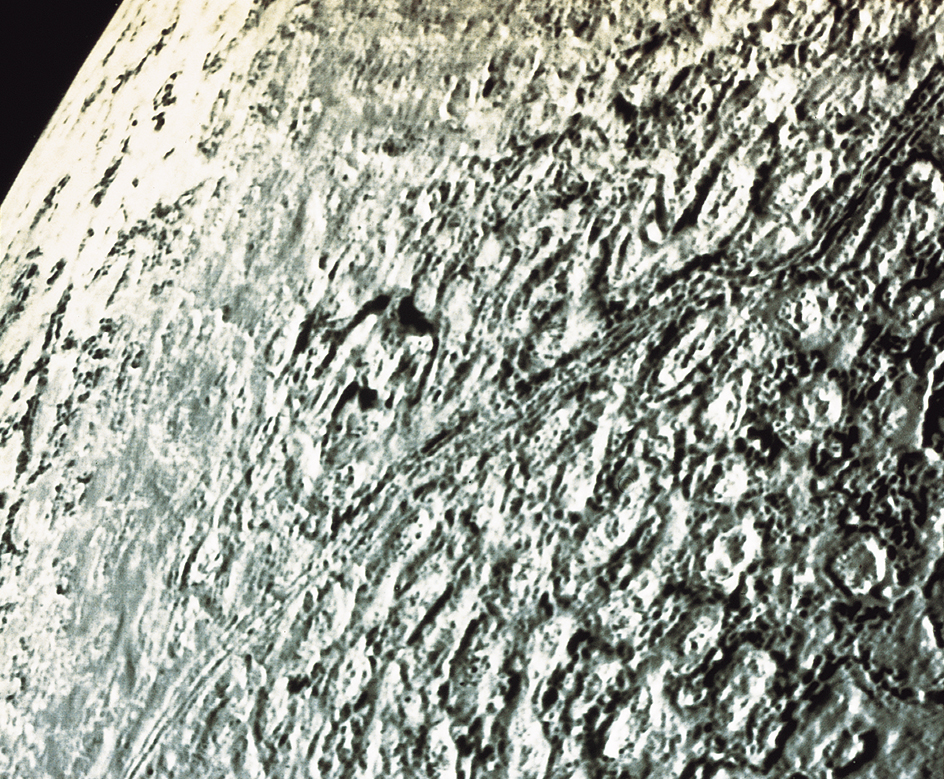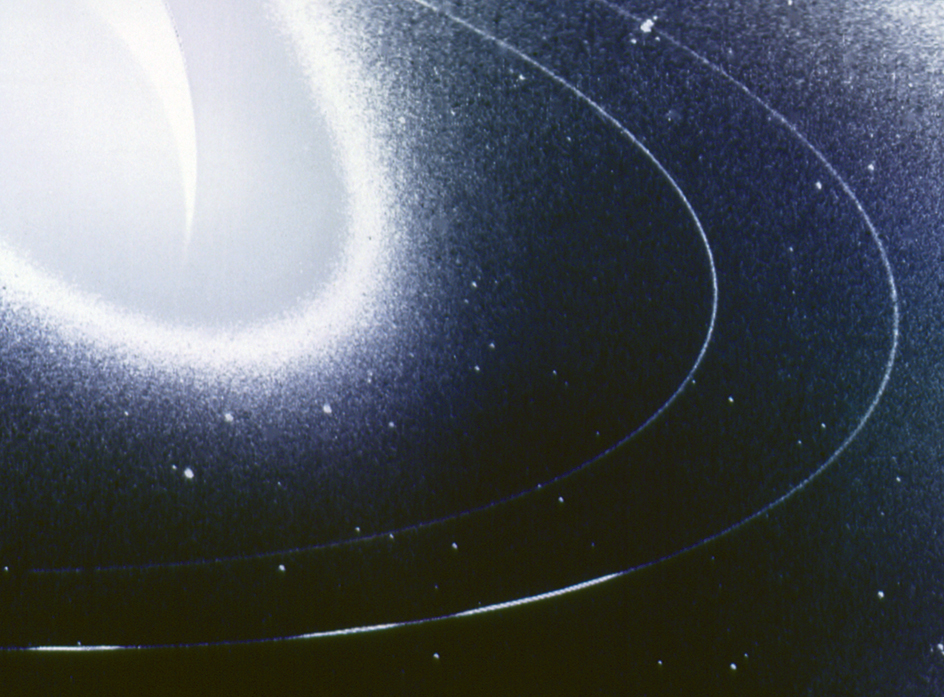Neptune is the solar system’s most distant planet from the sun. It is the only planet that cannot be seen from Earth without a telescope. Neptune is about 30 times as far from the sun as Earth is. Neptune’s average distance from the sun is about 2,793,100,000 miles (4,495,060,000 kilometers). Light can travel that distance in about 4 hours 10 minutes.

Neptune’s diameter at the equator is 30,775 miles (49,528 kilometers), or almost 4 times that of Earth. Neptune has 17 times as much mass (total matter) as does Earth. But Neptune is not as dense as Earth. Neptune has at least 16 satellites (moons) and several rings around it.
Neptune’s orbit is elliptical (oval-shaped). But Earth’s orbit, by comparison, is more than twice as eccentric (elongated) as Neptune’s. Neptune orbits the sun once every 165 years. On its path around the sun, Neptune spins on its axis. The axis is an imaginary line through the planet’s center. Neptune’s day—the time it takes to rotate once—lasts about 16 hours 7 minutes.
Neptune’s axis is not perpendicular (at a right angle) to the planet’s path around the sun. The axis tilts about 28° from the perpendicular position. Neptune’s tilt causes the planet to have seasons. Each season on Neptune lasts about 40 years. Like Earth, Neptune has a magnetic field. Neptune’s magnetic field is tilted about 47° from its axis of rotation. This fact makes magnetic north and geographic north relatively far apart on Neptune.
Structure and composition.
Scientists believe that Neptune has three layers. The core (innermost layer) probably consists of mostly iron, nickel, and silicates. Silicates are minerals that also make up much of Earth’s rocky crust (outer layer). Unlike Earth, Neptune has no solid surface. The layer above the core is a slushy mantle (middle layer) made of mostly ammonia, methane, and water ices. The large amount of ice within Neptune—and also Uranus—leads astronomers to label both planets ice giants. Neptune’s slushy mantle blends smoothly into its uppermost layer, a gaseous atmosphere of mostly hydrogen and helium. A small amount of methane gives the atmosphere a blue color.
In Neptune’s atmosphere, winds blow at speeds up to about 900 miles (1,450 kilometers) per hour. Unlike the winds of Jupiter, Saturn, and Uranus, Neptune’s winds tend to blow in the opposite direction of the planet’s rotation. Over time, bright clouds and huge, powerful storms appear and disappear. In 1989, the Voyager 2 spacecraft found that Neptune had a dark area of violently swirling gas that resembled a hurricane. This area, called the Great Dark Spot, was similar to the Great Red Spot on Jupiter. By 1994, the Great Dark Spot had vanished. But another dark spot was observed in 2016. Scientists think the formation of clouds on Neptune may be caused by the sun’s cycle of magnetic activity. This solar cycle reaches a peak about every 11 years. The highest clouds in Neptune’s atmosphere consist mainly of frozen methane. Many scientists think that Neptune’s darker, deeper clouds are composed of hydrogen sulfide.
Satellites and rings.
Astronomers have identified at least 16 satellites of Neptune. But the planet probably has more that have yet to be discovered. Triton, Neptune’s largest satellite, is about 1,700 miles (2,700 kilometers) in diameter. It orbits about 220,440 miles (354,760 kilometers) from Neptune. It orbits in the opposite direction to that of Neptune’s rotation. It is the only major satellite in the solar system that orbits a planet in this way. Triton has a circular orbit. It travels once around Neptune every six days. The British brewer and amateur astronomer William Lassell discovered Triton in 1846. He found it just 17 days after Neptune was discovered.


Triton may once have been a large comet that traveled around the sun. At some point, Neptune’s gravity probably captured the comet, and it became a satellite of Neptune. Triton has an orbit that is slowly dropping the satellite closer and closer to Neptune. In a few billion years, Triton will move so close that Neptune’s gravity will break it apart, possibly forming an icy ring.
Voyager 2 also observed geyserlike eruptions of nitrogen gas and dust that rose up to 5 miles (8 kilometers) above Triton’s surface. Triton’s surface is about –390 °F (–223 °C), but many scientists believe the sun provides enough heat energy to drive the nitrogen plumes.
Triton has relatively few impact craters. Many scientists believe that the lack of craters on the moon’s surface is the result of cryovolcanism (ice volcanoes). Neptune’s gravitational pull compresses and heats Triton’s interior. This additional heat may fuel the cryovolcanism, which, in turn, smooths over the moon’s surface.
In 1949, the Dutch astronomer Gerard Kuiper discovered a second moon orbiting Neptune. The moon was named Nereid after the Nereids, sea nymphs in Greek mythology.
In 1989, Voyager 2 provided the first close-up views of Neptune. It also discovered Neptune’s rings and six additional moons. Earth-based telescopes found five additional moons in 2002 and 2003. Astronomers discovered a 14th moon in 2013 by using the Hubble Space Telescope.

Discovery.
Neptune was discovered by studying another planet, Uranus, and by means of mathematics. Astronomers observing Uranus noticed a subtle difference in the planet’s observed orbit and its predicted orbit. They concluded that the gravitational force of some unknown planet was pulling on Uranus.

In 1843, John C. Adams, a young astronomer and mathematician, began working to find the planet. Adams calculated that the planet would be about 1 billion miles (1.6 billion kilometers) farther from the sun than Uranus. He completed his work in September 1845 and sent his computed orbit to Sir George B. Airy, the astronomer royal of England. The astronomer royal is a distinguished scientist who advises the king or queen on astronomical matters. However, Adams did not provide Airy with all the information needed to find Neptune.
Meanwhile, the French mathematician Urbain J. J. Le Verrier also became interested in the unseen planet. By mid-1846, Le Verrier had also calculated Neptune’s orbit. However, Le Verrier also used his calculations to predict Neptune’s position in the sky. He sent his predictions to the Urania Observatory in Berlin, Germany. Johann G. Galle, the director of the observatory, had just charted the stars in the area where the planet was believed to be. On Sept. 23, 1846, Galle and his assistant, Heinrich L. d’Arrest, found Neptune. The planet was in almost exactly the position predicted by Le Verrier.
Traditionally, Adams and Le Verrier have been jointly credited with the discovery. However, after Adams’s papers were rediscovered in 1998, some historians began to grant sole credit to Le Verrier. Adams’s papers revealed that he had not fully explained where in the sky Neptune could be found and that his calculations lacked the accuracy of Le Verrier’s. By contrast, Le Verrier’s calculations of position led Galle and d’Arrest to find Neptune after only a 30-minute search.
